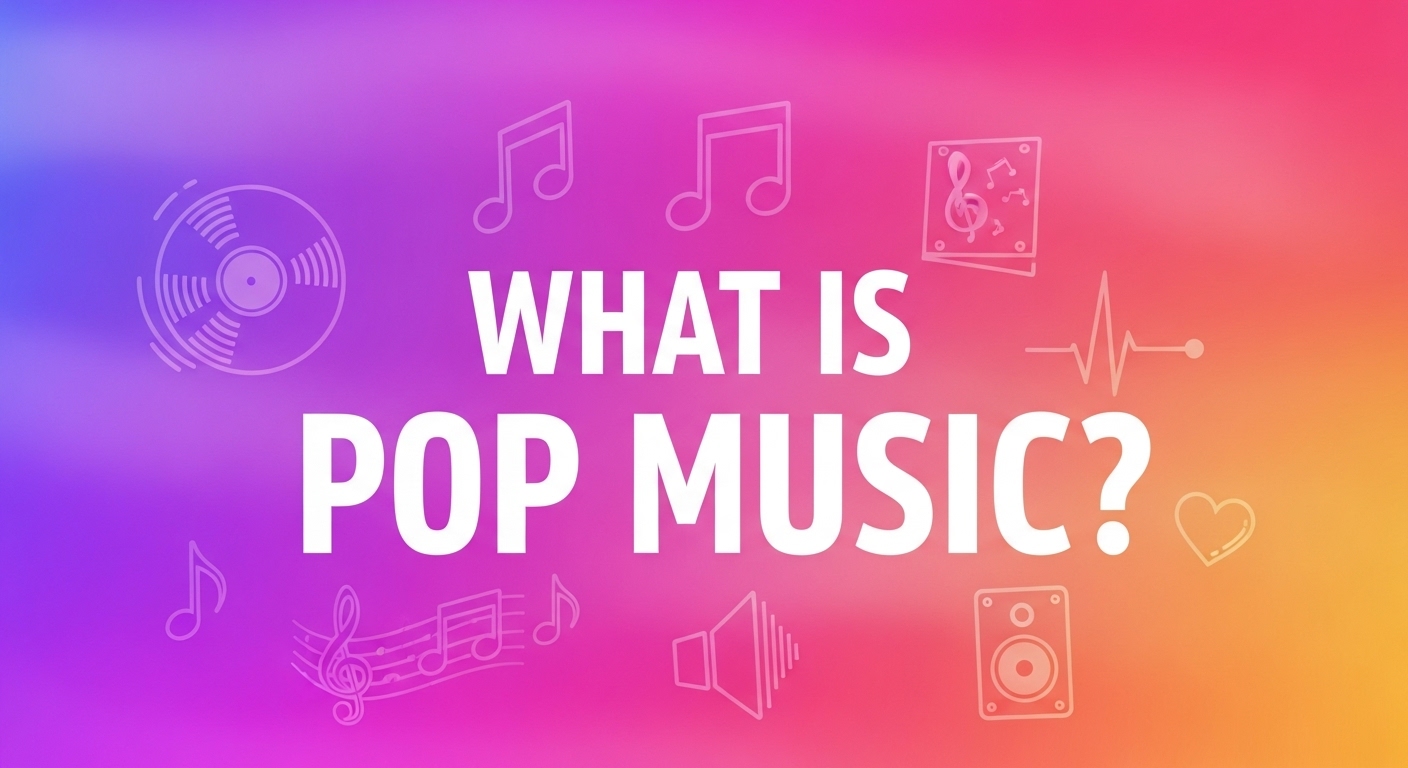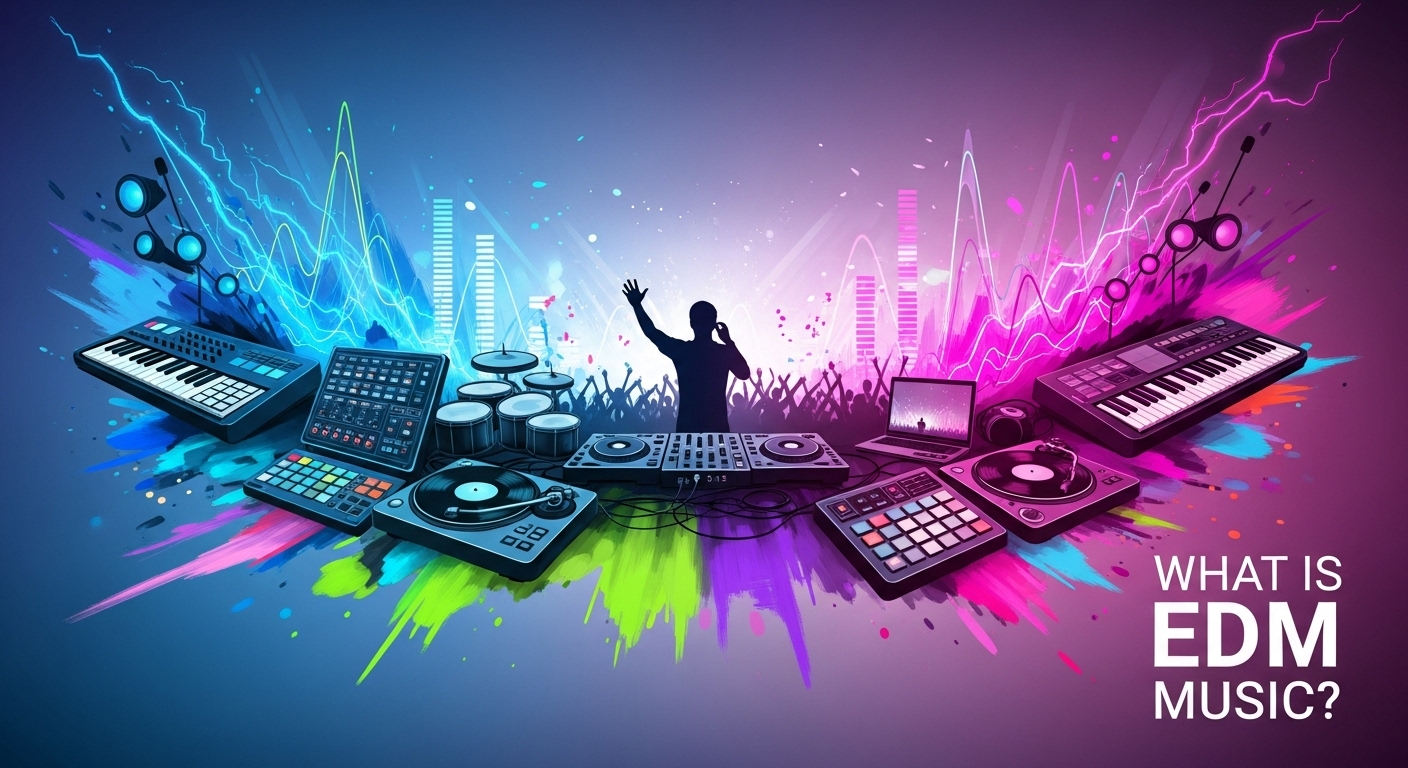

Areeba Imran
Wed Aug 06 2025
7 mins Read
If you're not sure what is pop music, you're not alone. Pop music may be found everywhere, including the radio, playlists, movies, and social media. But what makes music "pop"?
In layman's terms, pop music stands for popular music. It means songs that are appealing, easy to remember, especially designed for a large audience. These songs frequently address themes such as love, heartbreak, and joy, which many people may relate to.
From early rock & roll to present TikTok songs, pop music has evolved dramatically throughout the years. However, its purpose remains the same: to make music that is entertaining and memorable to as many people as possible.
Let’s explore the full story, what pop music is, what does pop music stands for, where it came from, how it has evolved, and how you can create pop music yourself with the help of AI.
What Does Pop Music Stand For?
When people ask what does pop stands for, the answer is simple: “pop” is short for popular. It doesn’t refer to a specific instrument or sound. Instead, it means music that is meant to be widely liked and easy to enjoy. Pop music is built for:
- Radio play
- Streaming success
- Social sharing
- Big performances
- Mass appeal
It’s music that connects with millions of people, whether you’re in New York, Tokyo, London, or Lagos.
A Quick History of Pop Music
To really understand what pop music is, it helps to go back to the beginning.
Early 1900s: The Start of Popular Music
Before streaming and radio, people listened to music at home on pianos. Sheet music was sold for popular songs—this was the earliest form of pop. These songs were short, melodic, and easy for families to sing or play together.
1920s to 1940s: Jazz and Big Band Pop
As radios became common, people could hear songs anytime. Jazz, swing, and big band styles became popular. Singers like Frank Sinatra and Ella Fitzgerald brought emotional vocals to the spotlight.
1950s and 1960s: The Pop Revolution
Rock and roll shook up the world in the 1950s. Elvis Presley, Chuck Berry, and Little Richard turned pop into youth-driven, energetic music. In the 1960s, The Beatles, The Supremes, and The Beach Boys made songs that topped charts and shaped culture.
1970s and 1980s: The Golden Age of Pop Stars
In the 70s and 80s, pop music exploded. Artists like Michael Jackson, Madonna, and Prince mixed dance rhythms, emotional lyrics, and new production styles. Music videos and TV performances helped pop stars reach every home.
1990s and 2000s: Teen Pop and Global Sound
This era brought us Britney Spears, NSYNC, Christina Aguilera, and later Beyoncé and Rihanna. Producers added more hip-hop and R&B flavors, and international styles began to influence Western charts.
2010s to Today: Pop Goes Digital
Today, pop is shaped by streaming, social media, and global trends. Artists like Taylor Swift, Ed Sheeran, Billie Eilish, BTS, and The Weeknd create songs that trend on TikTok, Spotify, and YouTube. Pop is more diverse and digital than ever.
What Makes a Song Pop?
Let’s answer the key question: what is pop music made of? Here are the traits that define it:
- Catchy melodies: Simple tunes that stick in your head
- Chorus and verse structure: Songs follow easy-to-recognize patterns
- Short length: Most pop songs are between 2 and 4 minutes
- Relatable lyrics: About love, emotions, parties, or everyday life
- Strong production: Clear beats, smooth vocals, and balanced instruments
- Dance-friendly rhythms: Easy to groove to, even if it’s not a dance track
- Mass appeal: Designed to connect with a wide range of people
Pop music focuses less on complex instruments or long solos, and more on the listener’s experience. It’s all about how the song feels.
Where Is Pop Music Popular?
Pop music is a global phenomenon. No matter where you are in the world, you’ll find pop songs on local radios, in coffee shops, at weddings, and on smartphones.
- United States and United Kingdom: Home to many of the world’s biggest pop stars
- Latin America: Produces global hits in Spanish and Portuguese
- Asia: K-pop and J-pop have created massive global fanbases
- Africa: Pop blends with Afrobeats, creating chart-topping sounds
- Europe: Many artists from Sweden, France, and Germany shape the sound of global pop Streaming services and social media make it easy for pop music to reach across languages and borders. That’s why pop is often called the world’s most universal genre.
Types of Pop Music
Pop is more than just one style. It includes many sub-genres. Let’s look at some of the most popular ones:
Dance Pop:
Upbeat tracks made for clubs and parties (e.g., Dua Lipa, Lady Gaga)
Synth Pop:
Uses electronic keyboards and drum machines (e.g. The 1975, CHVRCHES)
Teen Pop:
Made for younger audiences with light themes (e.g. Olivia Rodrigo, Justin Bieber)
Pop Rock:
Mixes rock instruments with pop vocals (e.g. Imagine Dragons, OneRepublic)
R&B Pop:
Combines soulful singing with pop beats (e.g., Ariana Grande, Bruno Mars)
Indie Pop:
Less commercial, more artsy or experimental (e.g., Clairo, Rex Orange County)
Latin Pop:
Spanish-language hits often blending reggaetón and salsa (e.g., Shakira, Bad Bunny)
These sub-genres show just how flexible pop music is. It can take influence from anywhere, and often does.
Why Pop Music Is Still So Popular
Wondering why pop music keeps winning generation after generation? Here’s why it stays relevant:
- It changes with time – Pop absorbs styles from hip-hop, EDM, country, and more
- It works on every platform – Radio, TikTok, YouTube, and streaming playlists
- It’s made to be liked – Catchy hooks and emotional lyrics win hearts
- It’s easy to sing along – Even if English isn’t your first language
- It connects people – No matter where you live, pop gives a shared experience
- In short, pop music evolves with the world. That’s why it never gets old.
Can You Create Pop Music Without Experience?
Yes, and that’s where AI tools like ImagineArt Music Studio come in. Creating pop songs used to require:
- A studio
- Expensive software
- Music theory knowledge
- Instruments and vocalists
- But not anymore.
ImagineArt Music Studio makes it possible for anyone, anywhere, to create pop songs using AI. You don’t need to be a producer or songwriter. Just describe what you want, and the system builds it for you.
How ImagineArt Helps You Create Pop Music
With ImagineArt, creating pop music is easy, fast, and fun. Here’s what you can do:
- Choose your vibe: Want a happy, sad, romantic, or dance feel? Select the mood.
- Pick a pop style: Go for teen pop, dance pop, synth pop, or custom blends.
- Let the AI compose: Get a complete pop track in seconds, verse, chorus, melody, and beat.
- Add vocals: Use built-in AI vocals or add lyrics and let the system sing.
- Customize the sound: Change tempo, structure, and instruments to match your vision.
- Download royalty-free: Use your song for videos, content, social posts, or personal projects. It’s never been easier to turn an idea into a full pop song, no tools or training required.
Who Uses AI Pop Music?
- YouTubers and creators: Add original pop music to your content
- Game developers: Make custom music for characters, scenes, or menus
- Podcast hosts: Create intro and background music that stands out
- Musicians and songwriters: Use AI as a creative partner
- Every day, music lovers: Just want to hear your ideas come to life
No matter your background, if you’ve ever wondered how pop songs are made, ImagineArt gives you the answer and the tools.
The Key Takeaway:
So now you know: what is pop music? It’s the sound of connection. It's music meant to be adored by millions, tunes you can hum, dance to, or cry to. It's music that connects with you regardless of where you live or the language you speak.
Pop music evolves with global trends, but its heart remains constant: emotion, rhythm, and melody. Pop keeps people dancing via radio, TikTok, concerts, and personal headphones.
With ImagineArt Music Studio, you can create your pop songs. Whether for fun, content, or personal passion, you have the tools to make real music in minutes.
No instruments. No pressure. Just you, your voice, and a little AI magic.
Frequently Asked Questions (FAQs)

Areeba Imran
Areeba Imran specializes in content marketing for GenAI and SaaS companies, helping them grow with strong writing and strategy.
